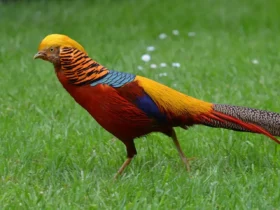In the vast savannas and woodlands of Africa, a small but colorful bird adds its cheerful notes to the chorus of wildlife—the Acacia Pied Barbet (Tricholaema leucomelas). With its distinctive plumage, melodic calls, and affinity for acacia trees, this charming bird enchants both birdwatchers and nature enthusiasts alike. Join us as we explore the fascinating world of the Acacia Pied Barbet, discovering its appearance, behavior, habitat, and ecological significance.
Acacia Pied Barbet images
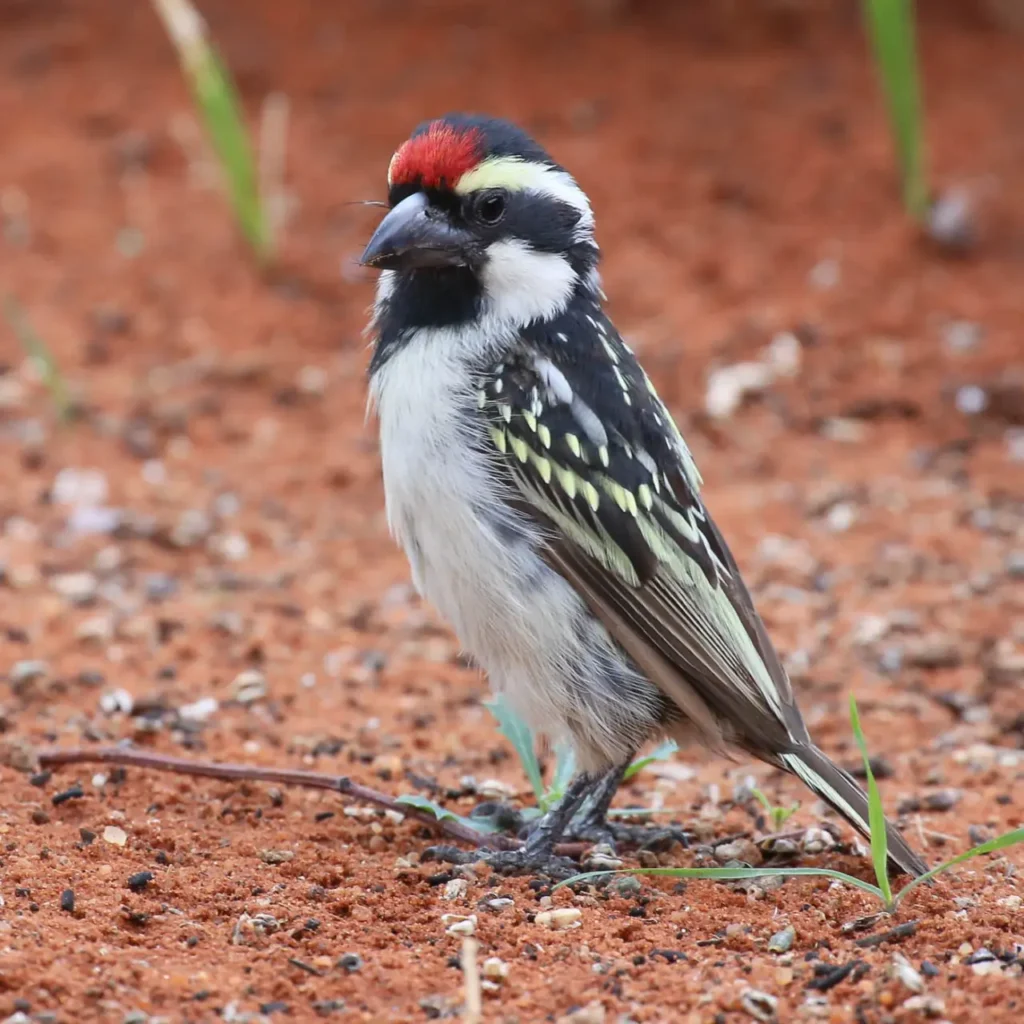
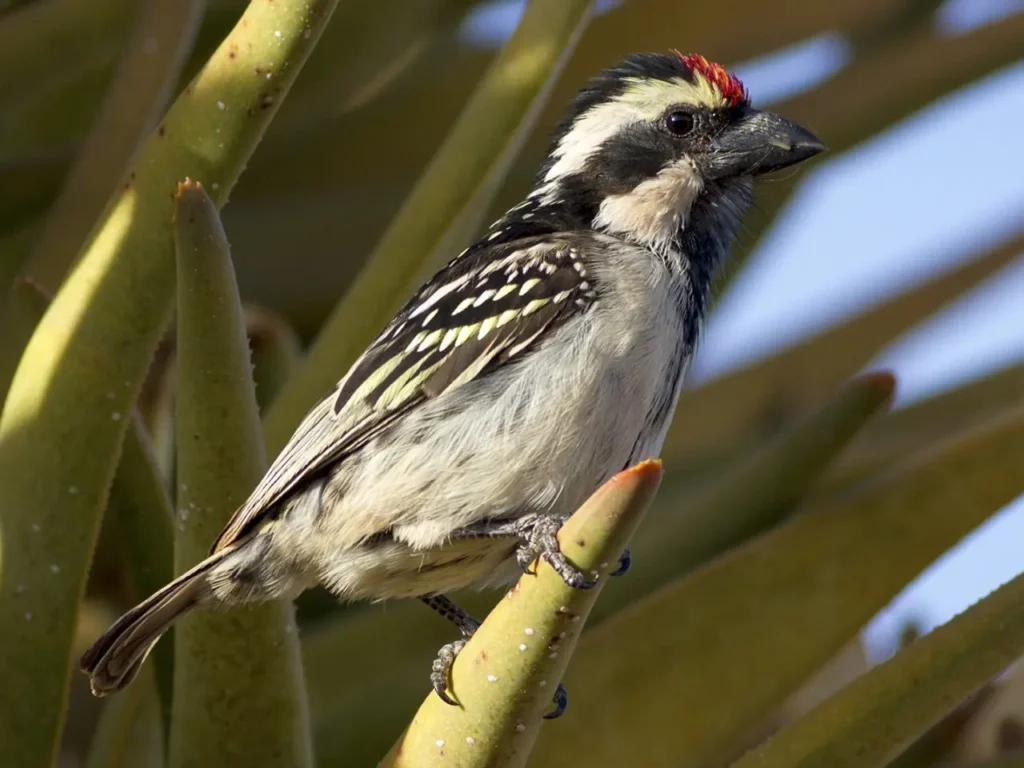
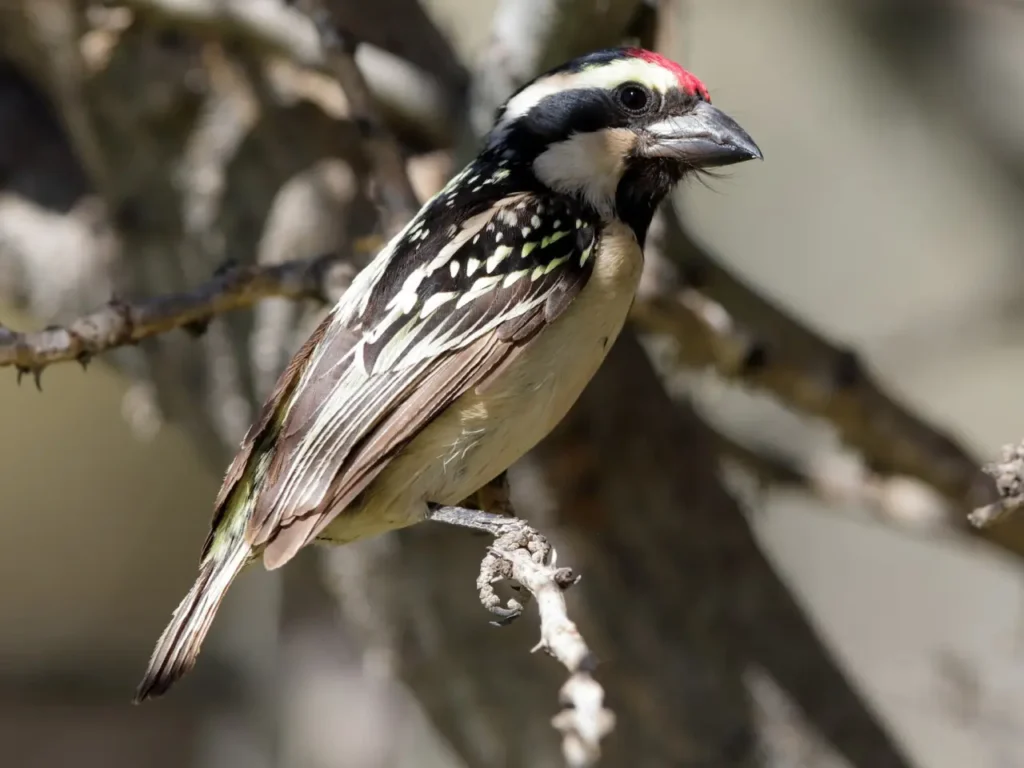

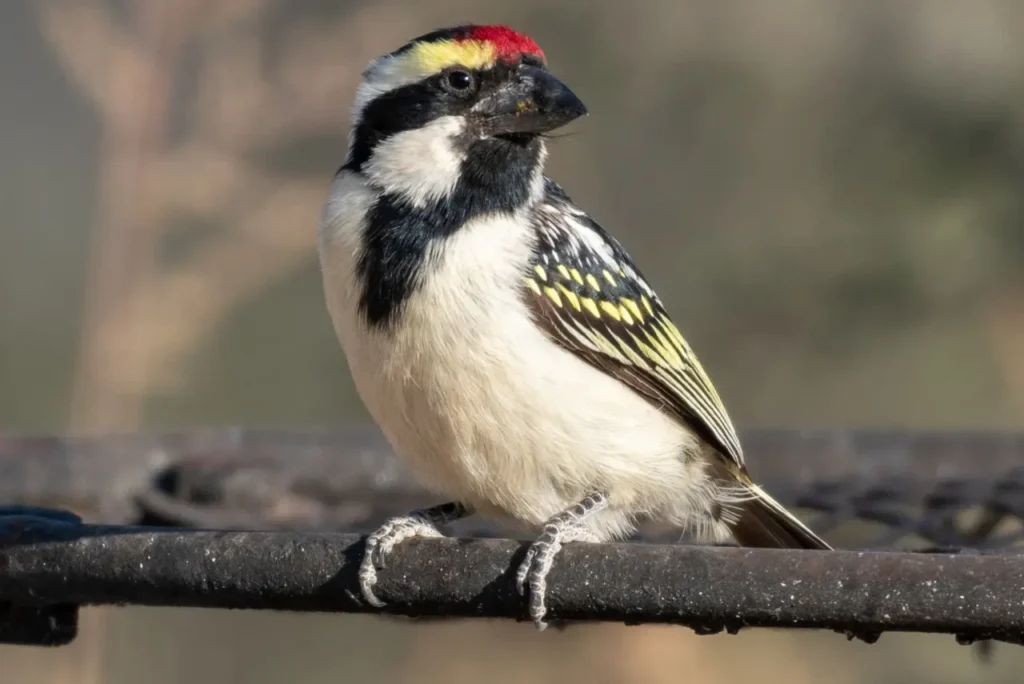

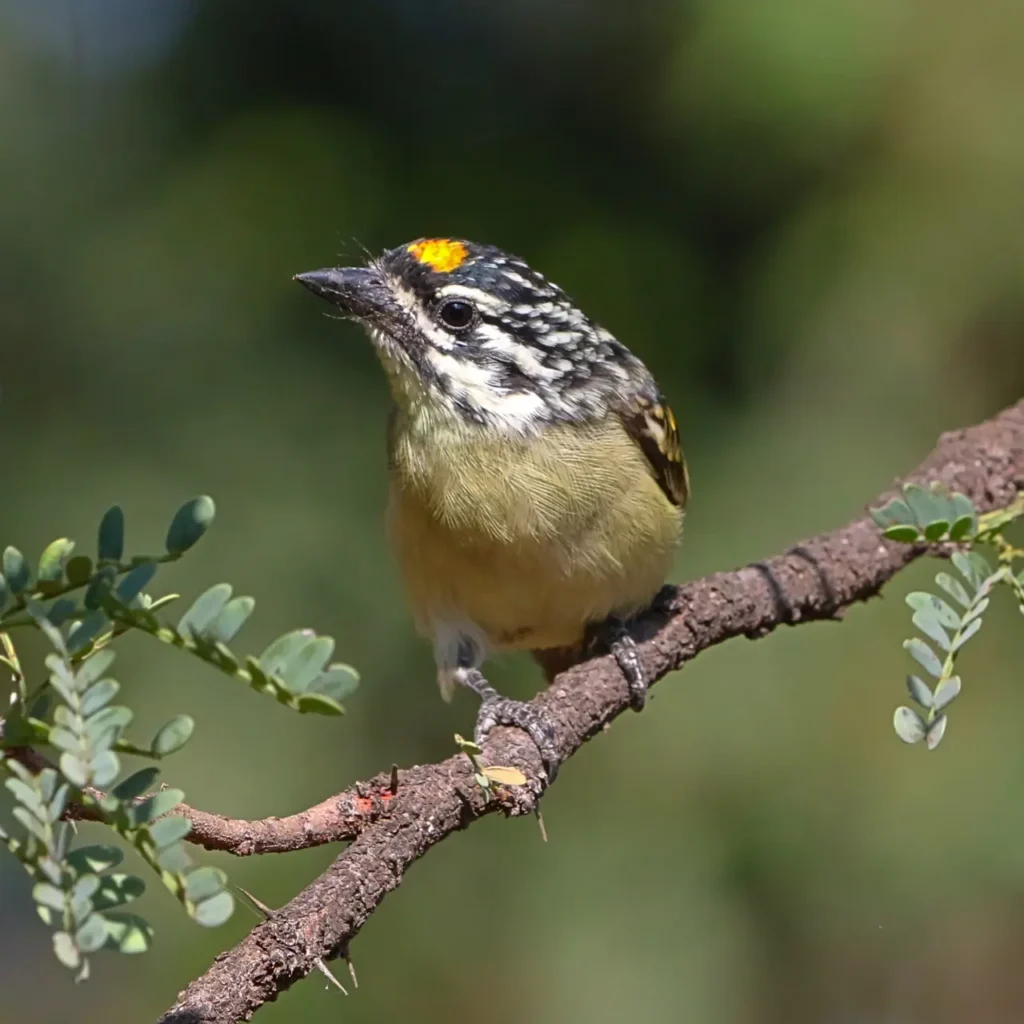

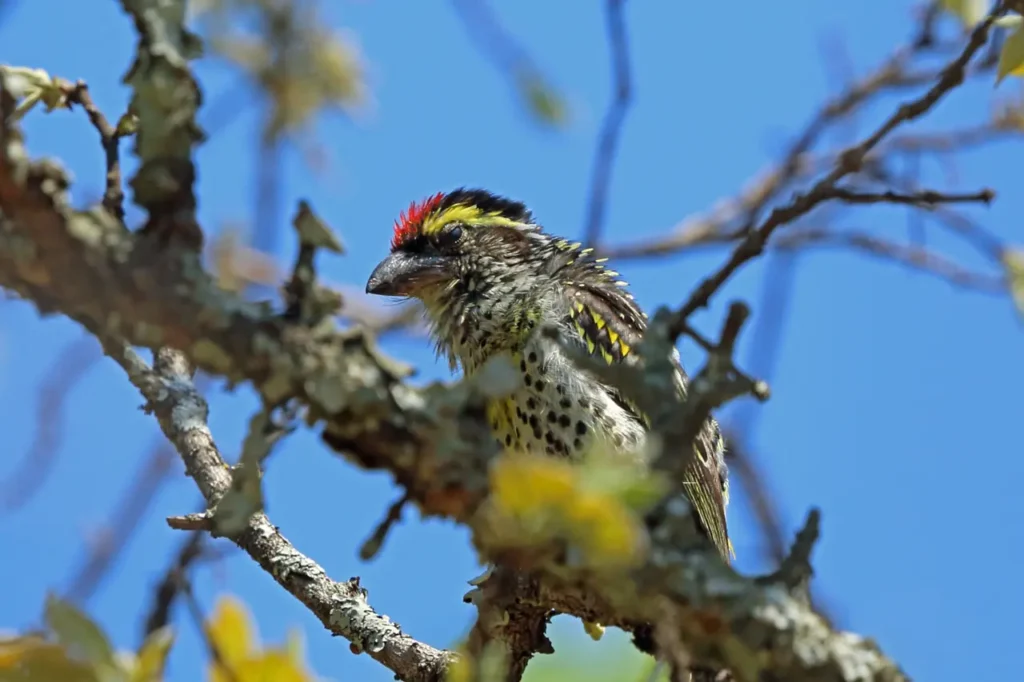
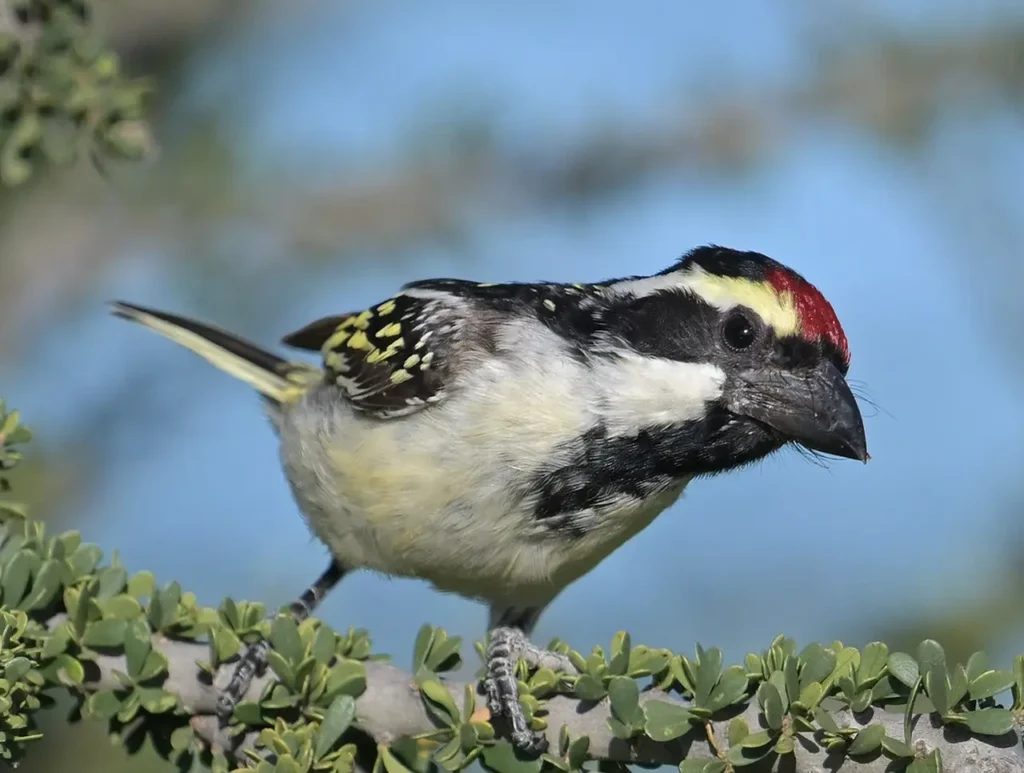

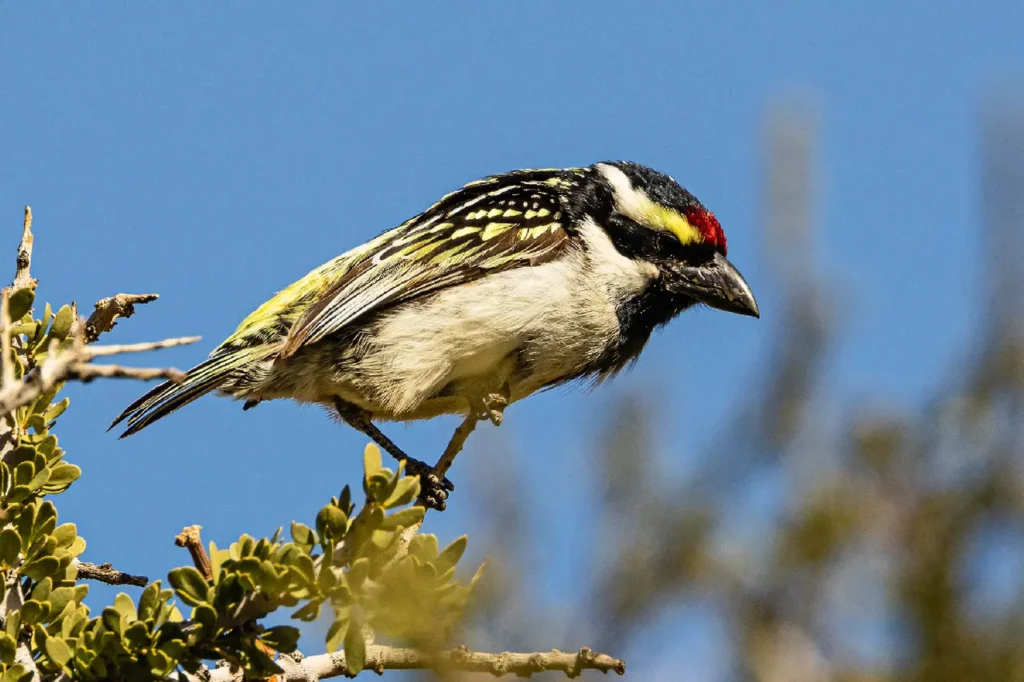
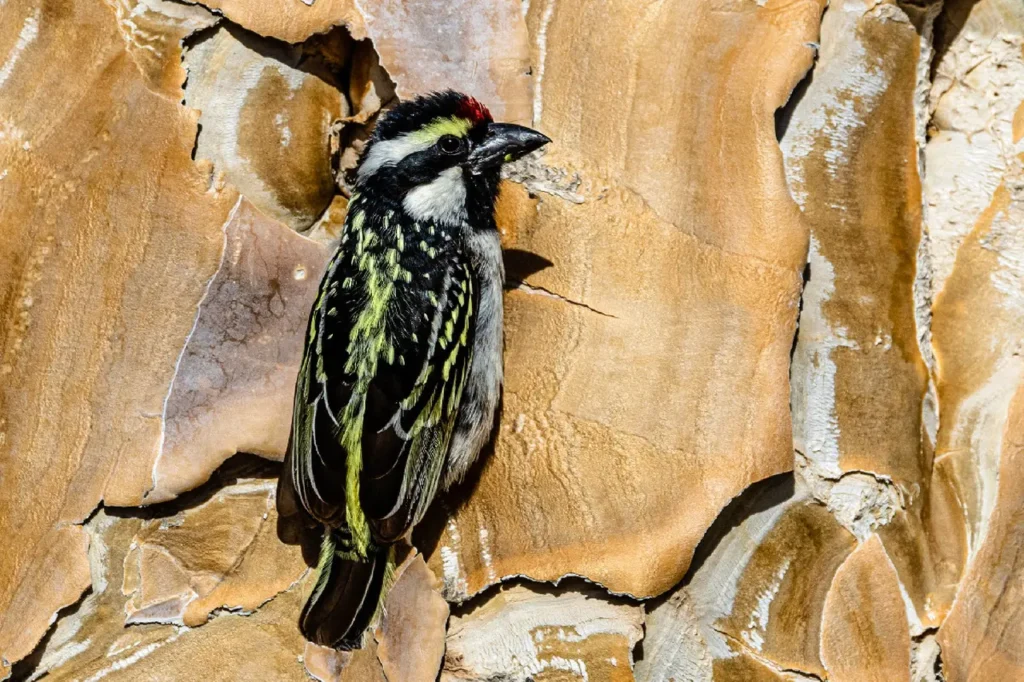
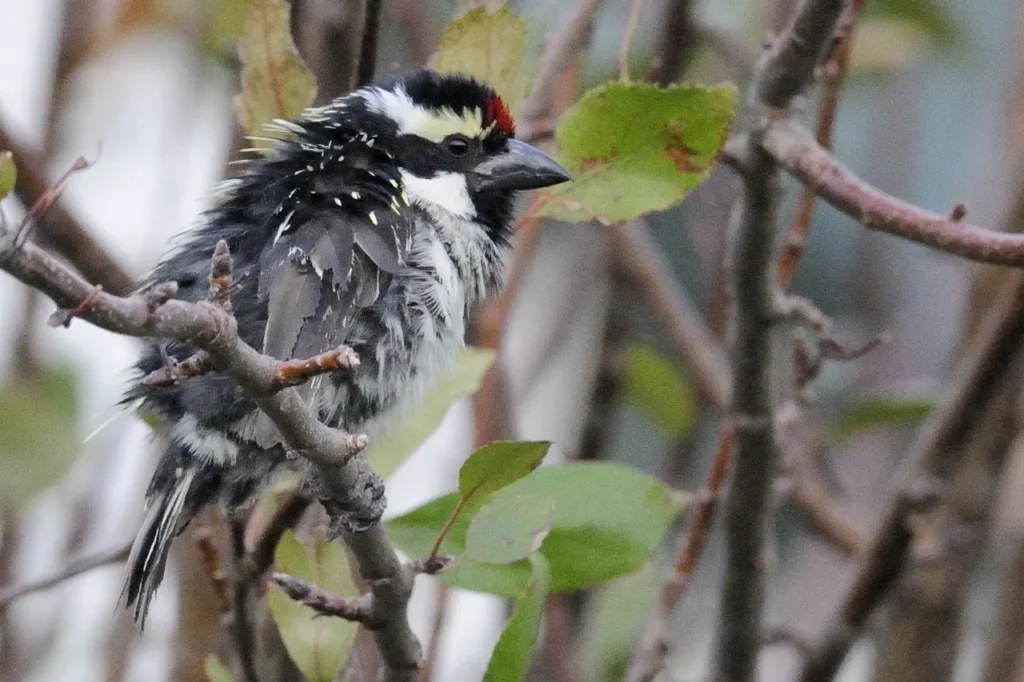

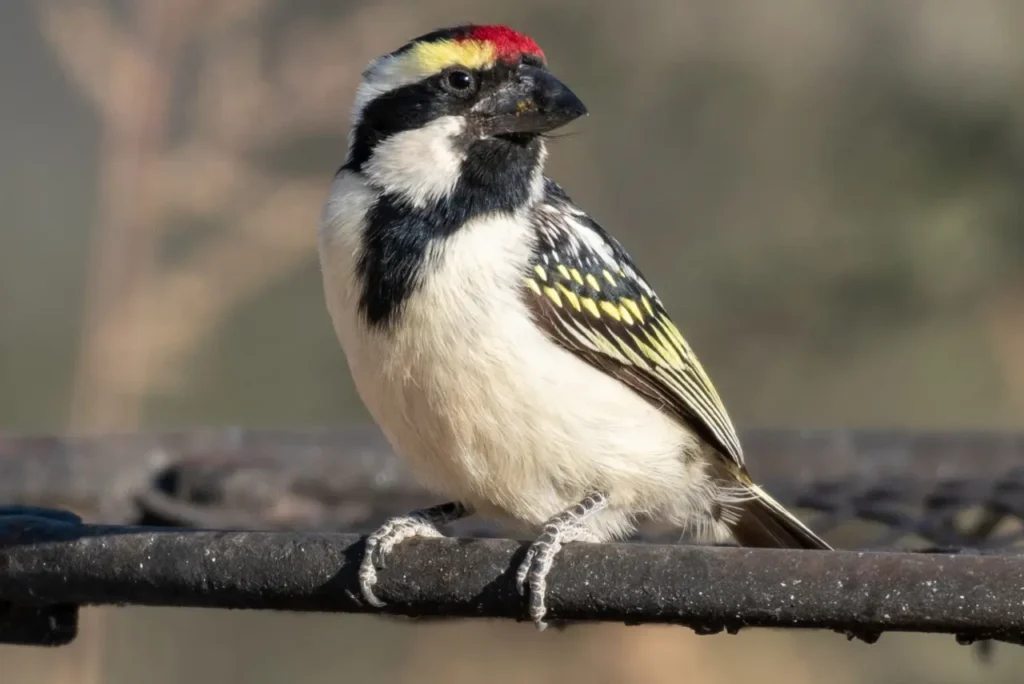
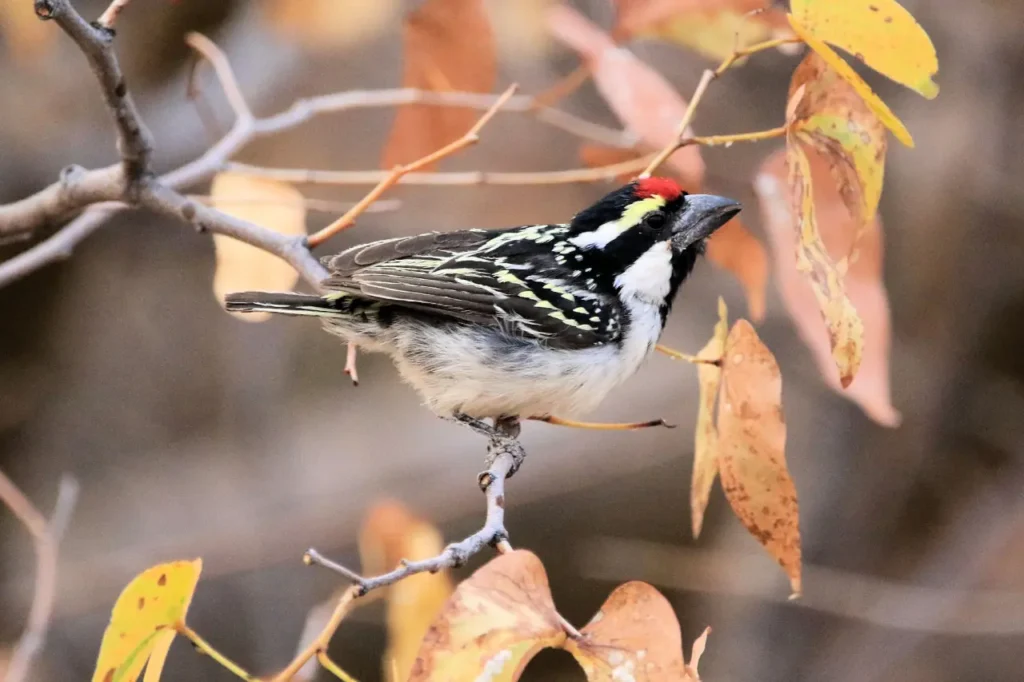
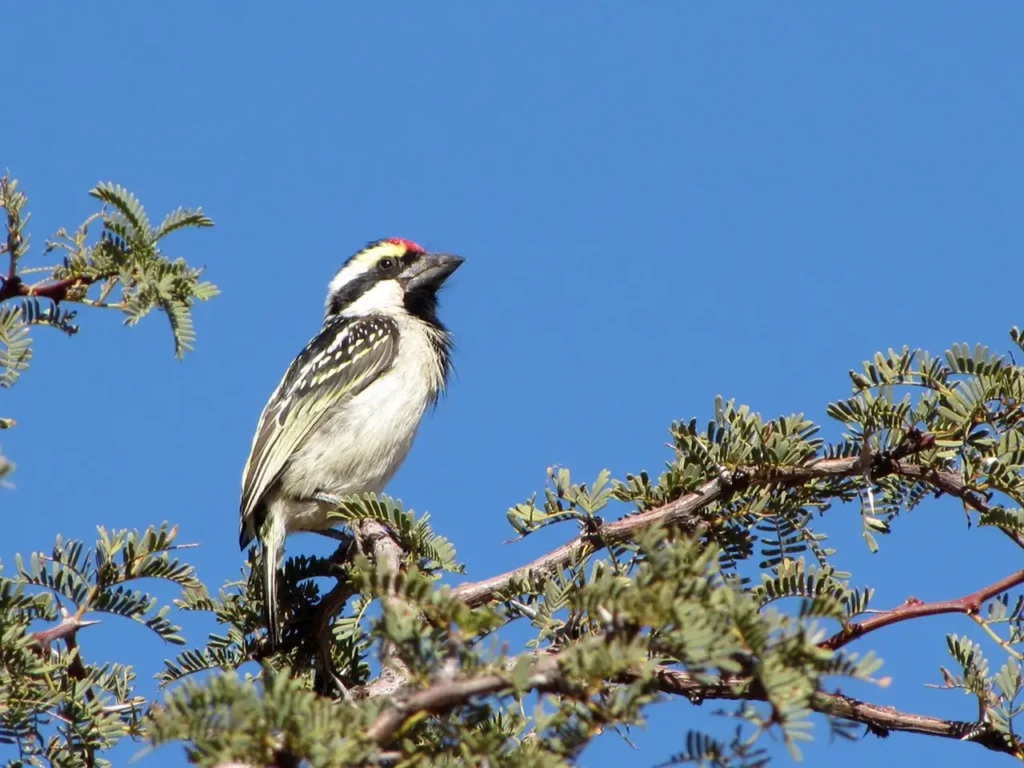
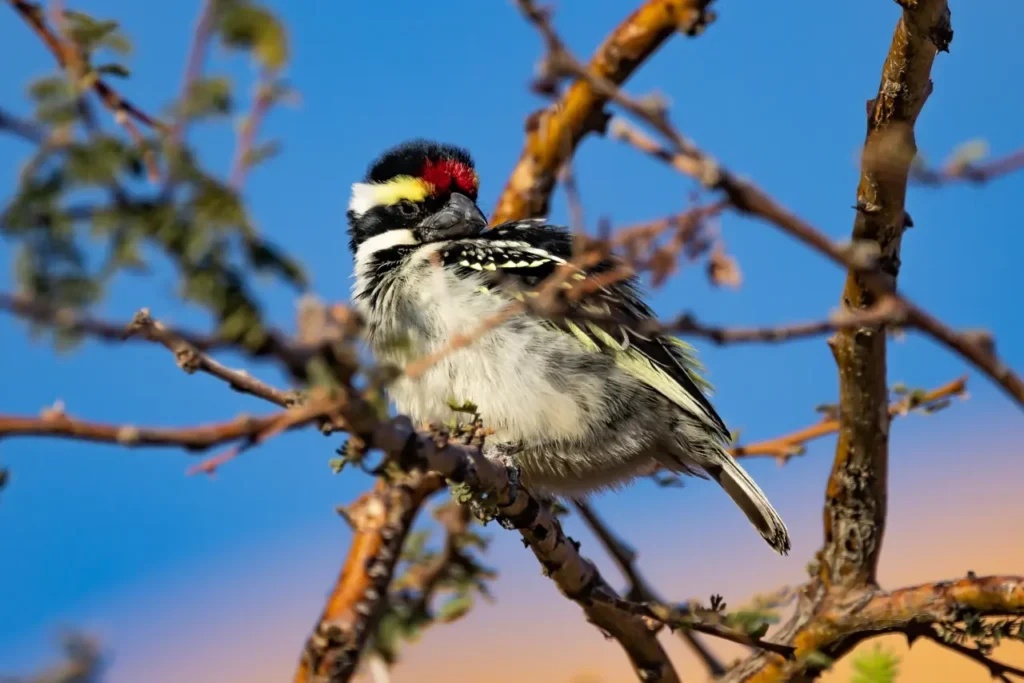
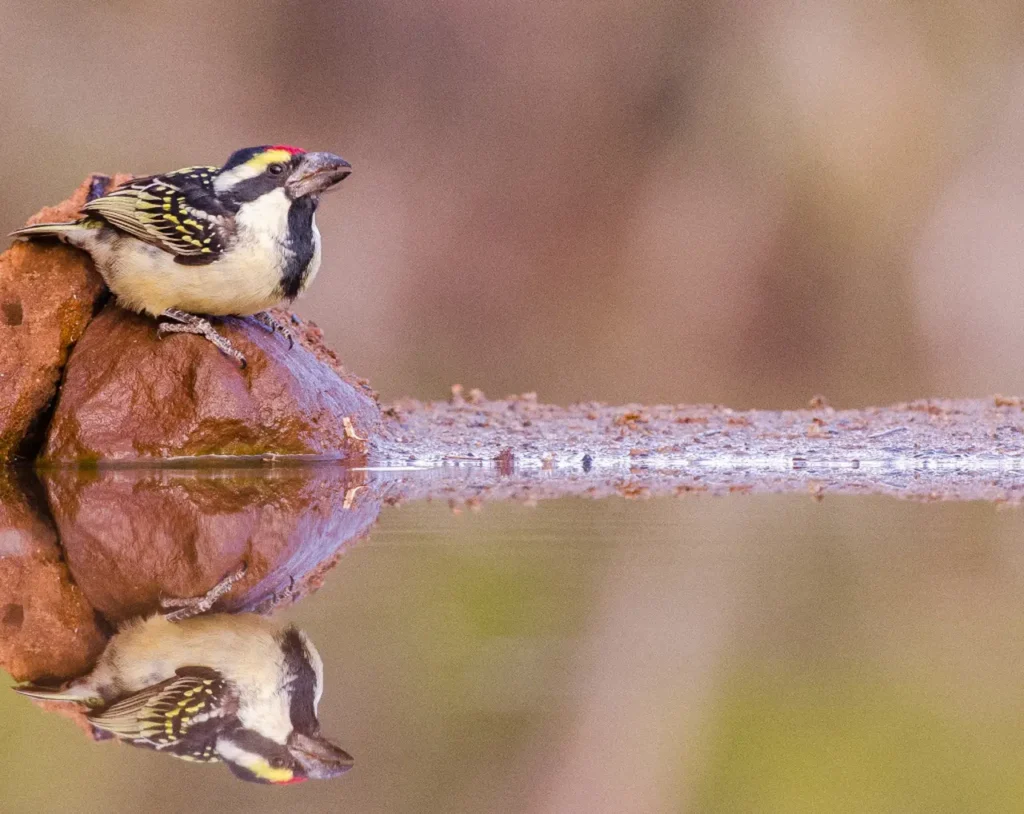

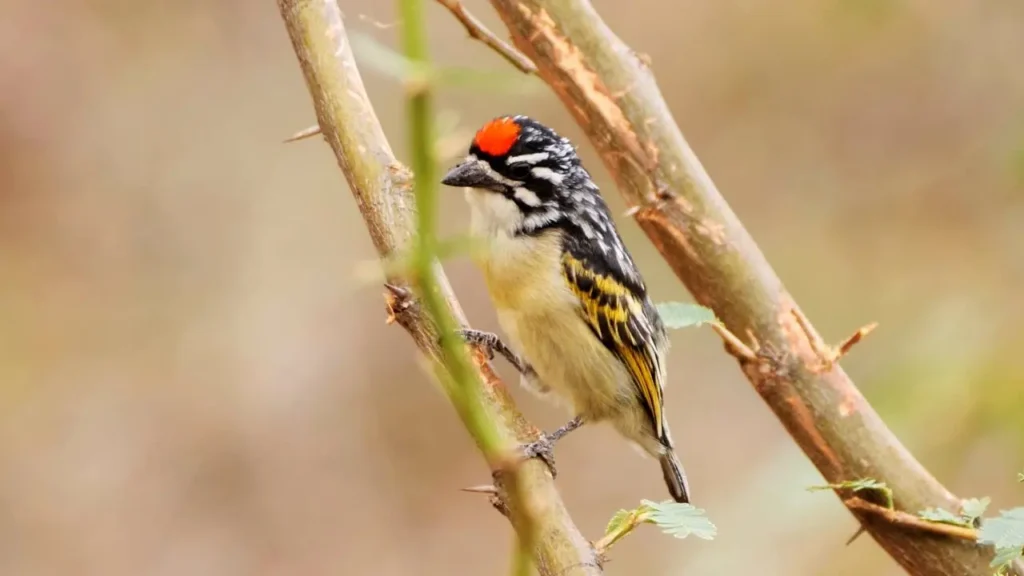
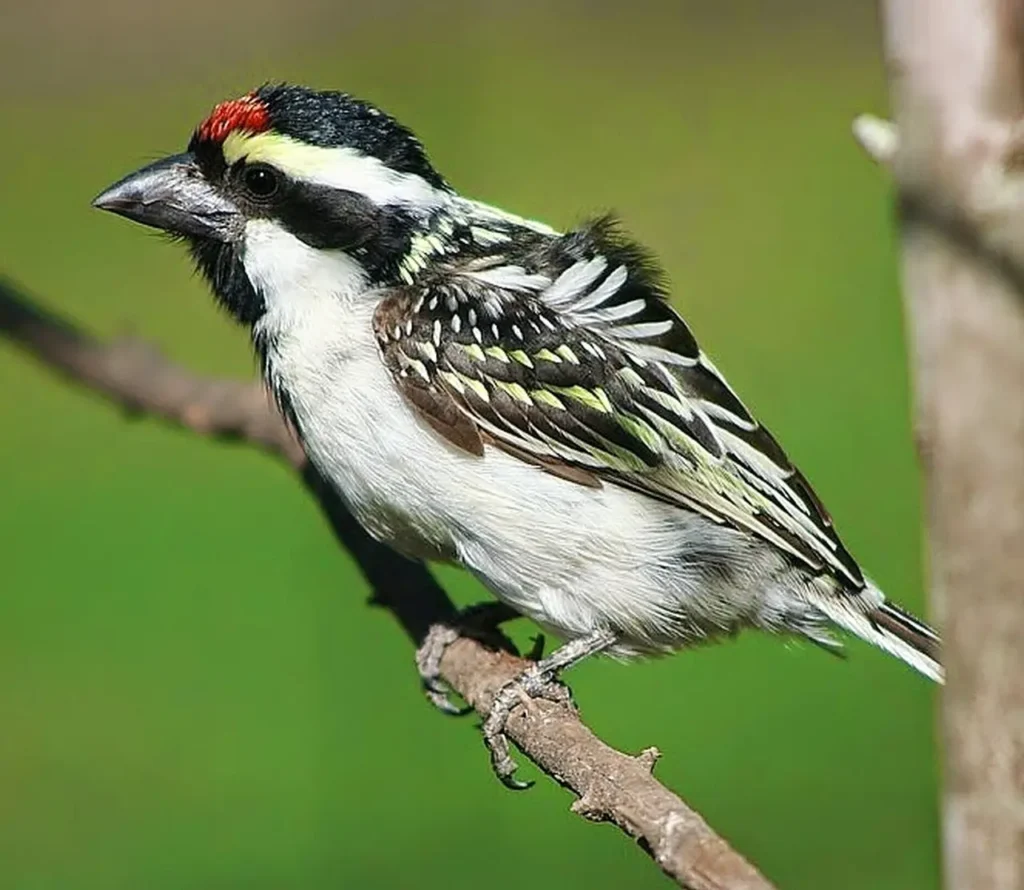
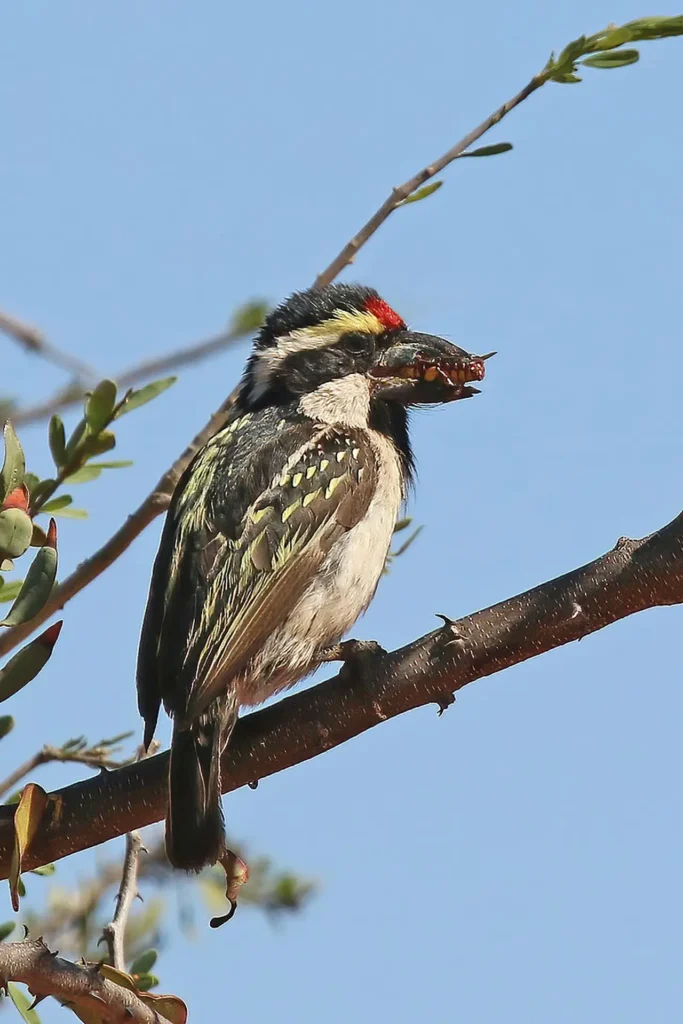
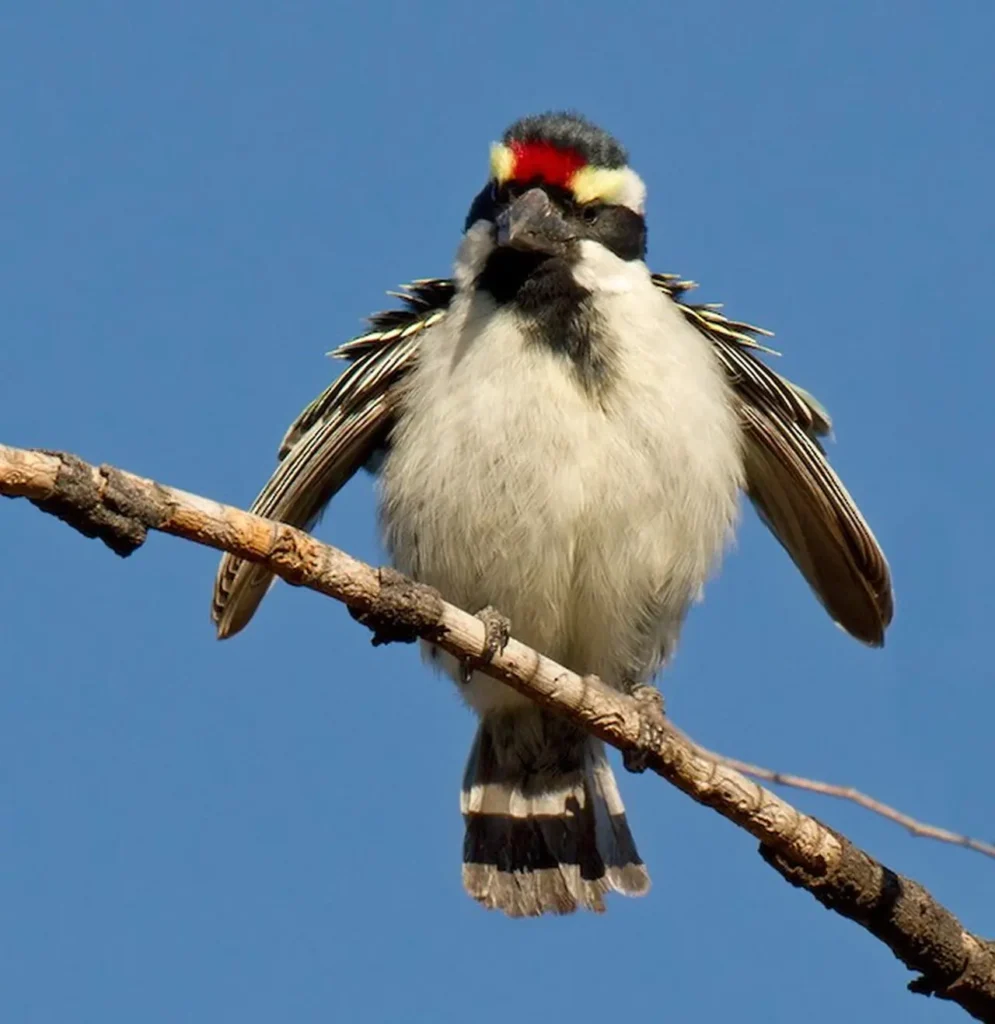
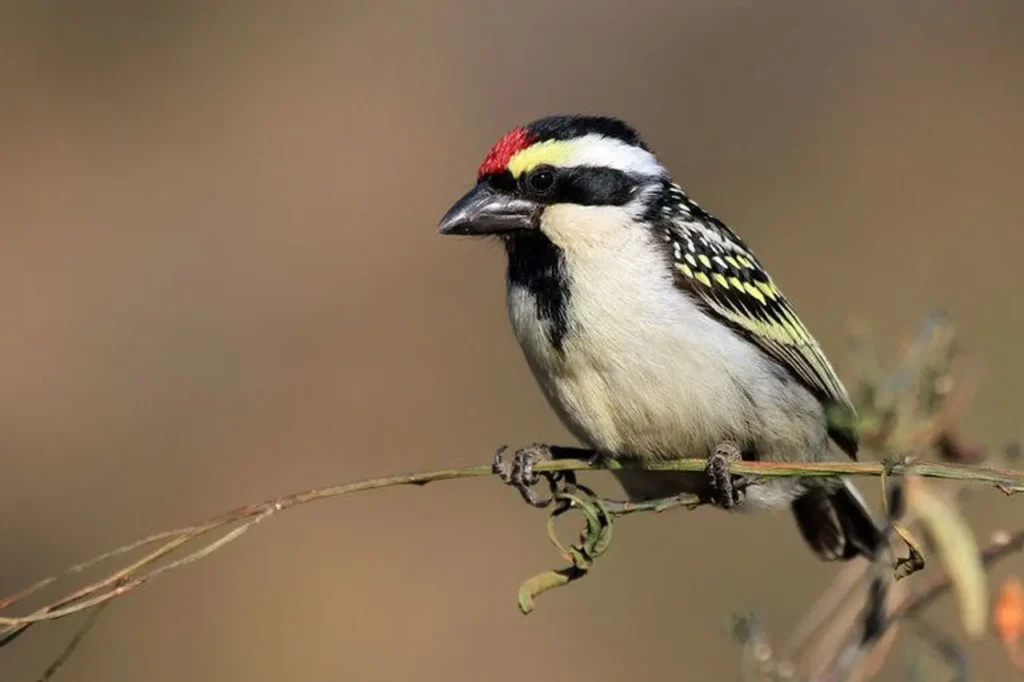

Appearance and Distribution
The Acacia Pied Barbet is a compact bird, measuring around 18 centimeters (7 inches) in length. It features a black head, a white face with a black stripe across the eye, and a black bill. Its body is predominantly black and white, with a black back and wings, and a white belly and undertail. This striking contrast of colors adds to the bird’s visual appeal. Males and females have similar plumage, with subtle differences in size and sometimes color intensity.
This barbet species is native to the woodlands and savannas of sub-Saharan Africa. It can be found in countries such as South Africa, Namibia, Botswana, Zimbabwe, and parts of eastern Africa. The Acacia Pied Barbet is particularly associated with acacia trees, where it finds both shelter and food.
Behavior and Habitat
Acacia Pied Barbets are highly social birds, often seen in pairs or small family groups. They are territorial and defend their chosen area, including a favored acacia tree that provides them with nesting sites and food sources. These birds are agile climbers, using their strong beaks to excavate nest holes in the trunks or branches of acacia trees. They have a distinctive call, a series of melodious trills and whistles that they use for communication and territory defense.
The barbets primarily feed on a variety of fruits, insects, and small invertebrates. Acacia trees, in particular, provide a plentiful food supply for them, as they feed on the tree’s blossoms, fruits, and associated insects.
Ecological Significance
The Acacia Pied Barbet plays an important role in the ecosystem as a pollinator and seed disperser. As it feeds on the nectar and fruits of various plants, it inadvertently transfers pollen from flower to flower, facilitating cross-pollination. In turn, it helps ensure the reproduction and genetic diversity of plant species. Additionally, the bird’s feeding habits contribute to the dispersal of seeds, aiding in the regeneration and colonization of new areas.
Conservation and Threats
The Acacia Pied Barbet is not currently considered a threatened species. However, habitat loss, deforestation, and land degradation pose ongoing challenges to its populations. Maintaining healthy woodlands and savannas, preserving acacia tree habitats, and promoting sustainable land-use practices are crucial for the long-term conservation of this charismatic bird.
Appreciating Nature’s Melodious Gem
The Acacia Pied Barbet, with its striking appearance and delightful calls, brings a touch of vibrancy to the African savannas. Its role as a pollinator and seed disperser contributes to the intricate web of life in its habitat.
By valuing and protecting the woodlands and savannas that the Acacia Pied Barbet calls home, we not only safeguard the survival of this delightful bird but also support the overall biodiversity and ecological balance of the African landscape. Let us appreciate and celebrate the presence of this melodic gem, ensuring its place in the natural symphony of the African savanna for generations to come.
